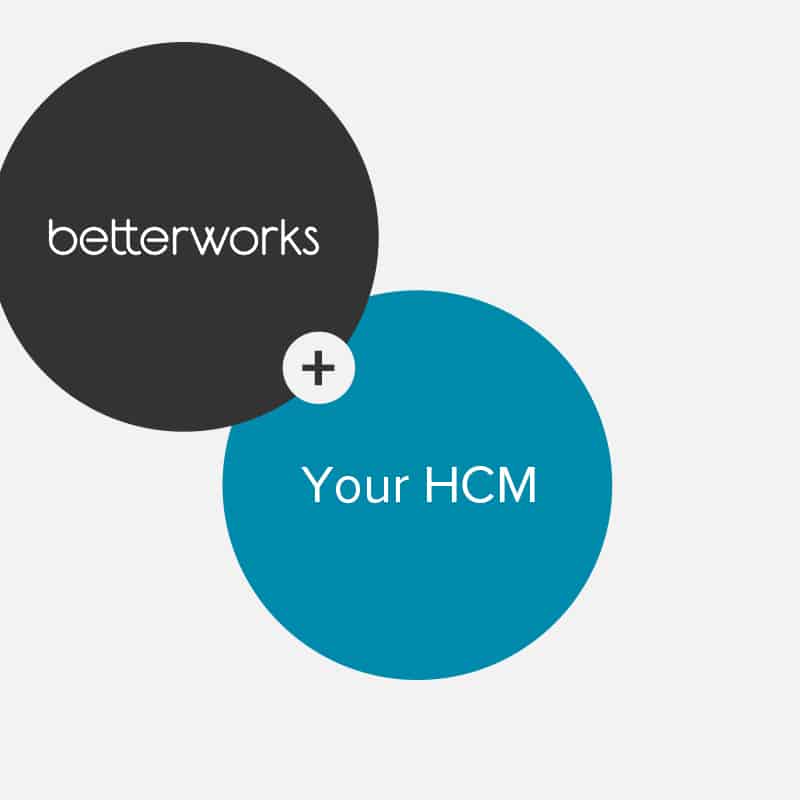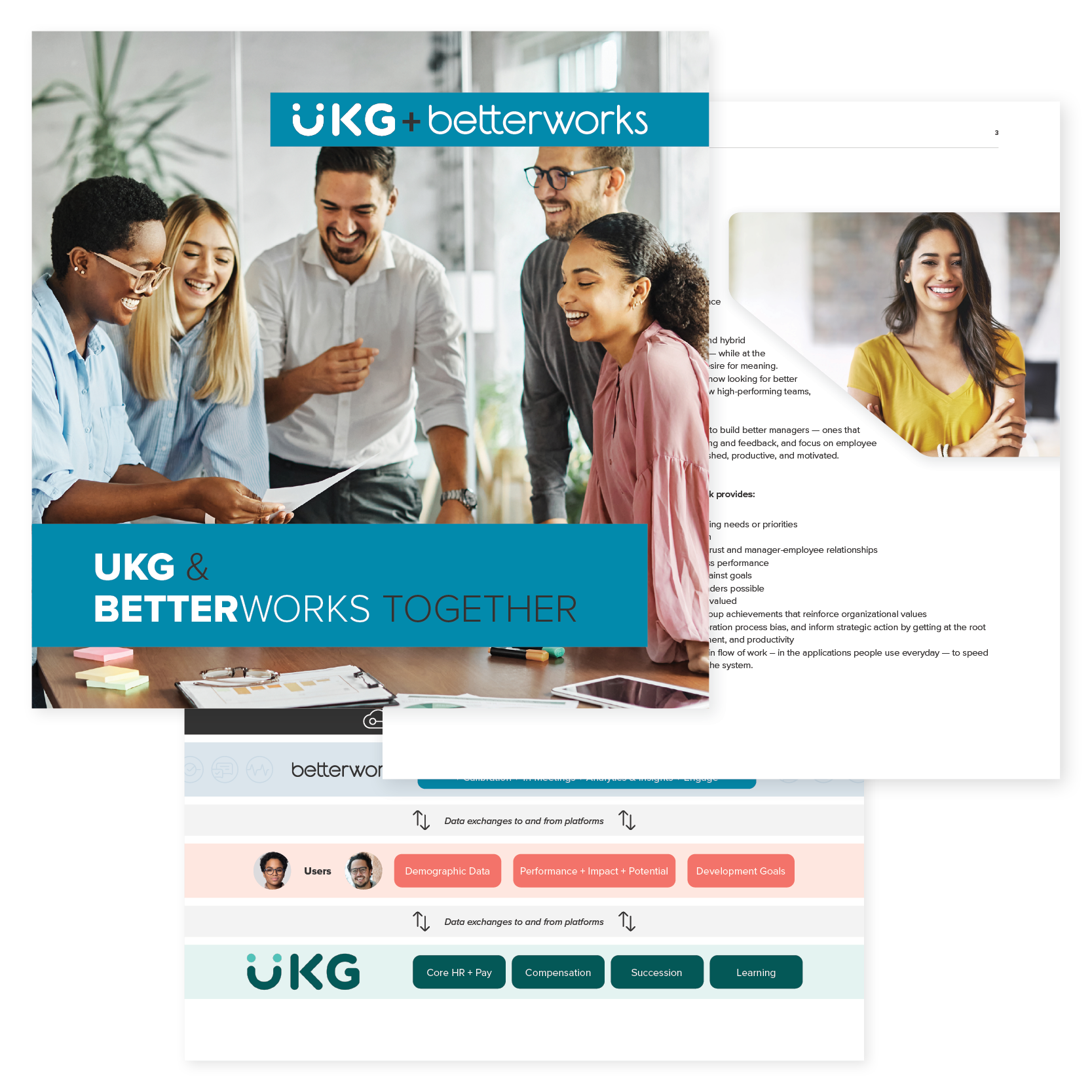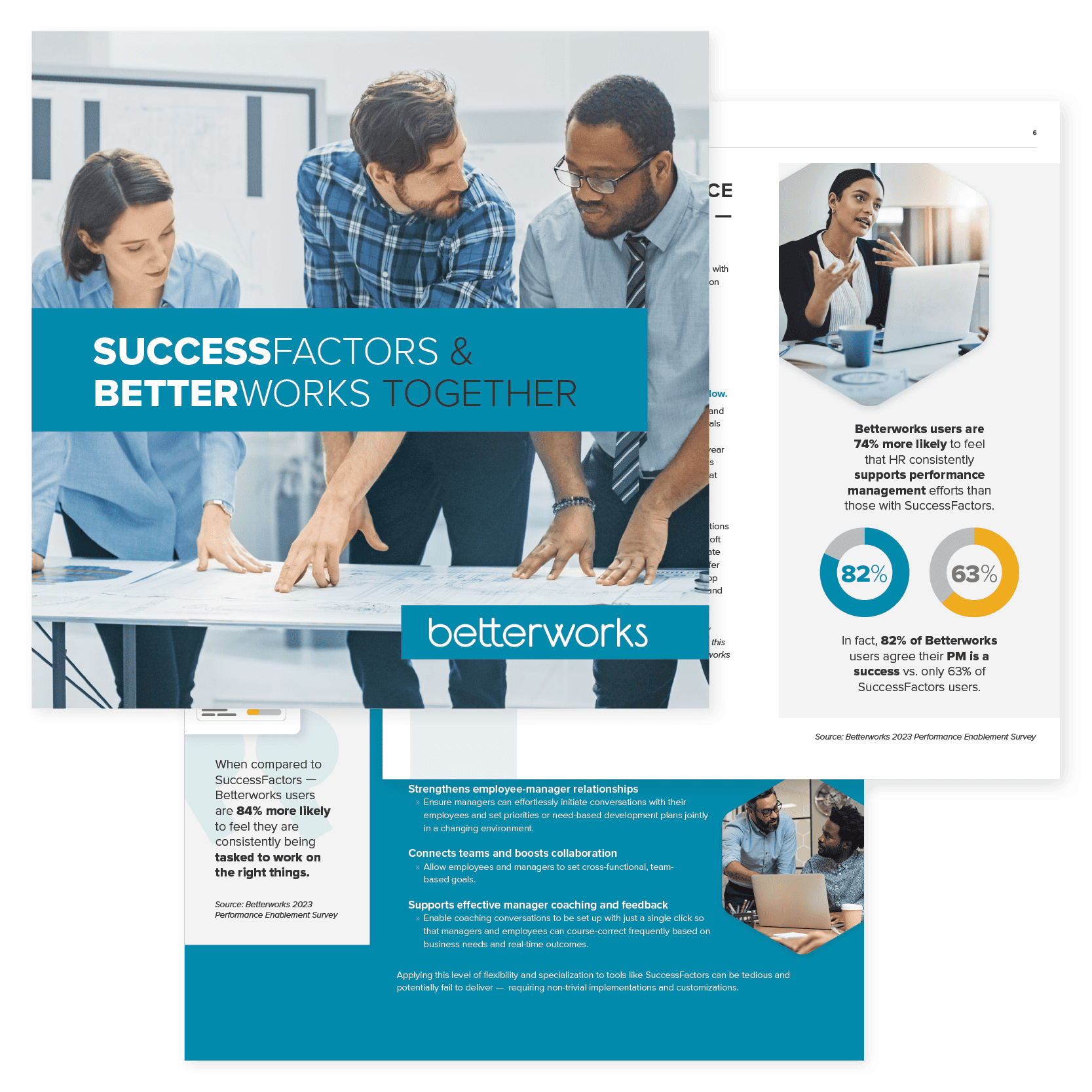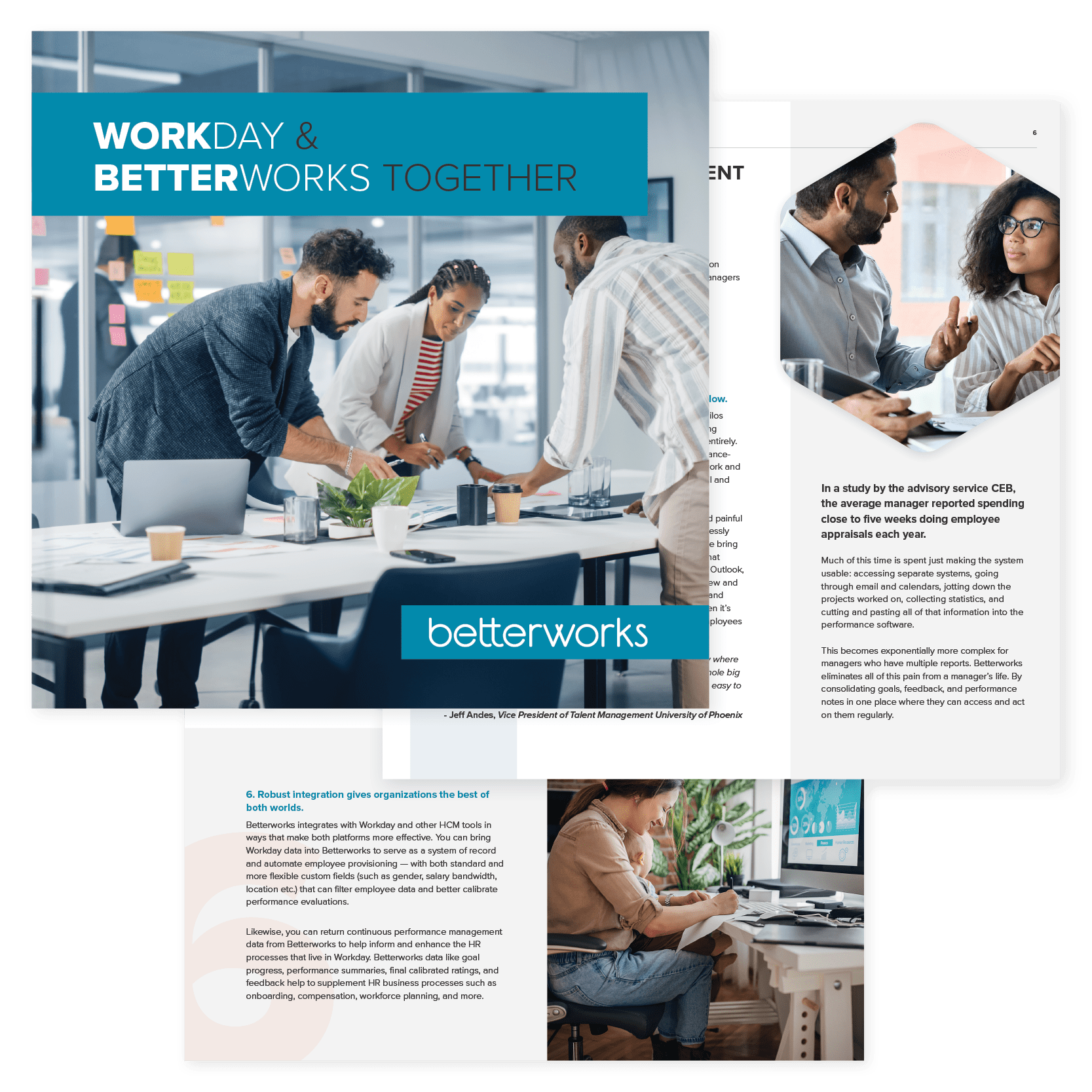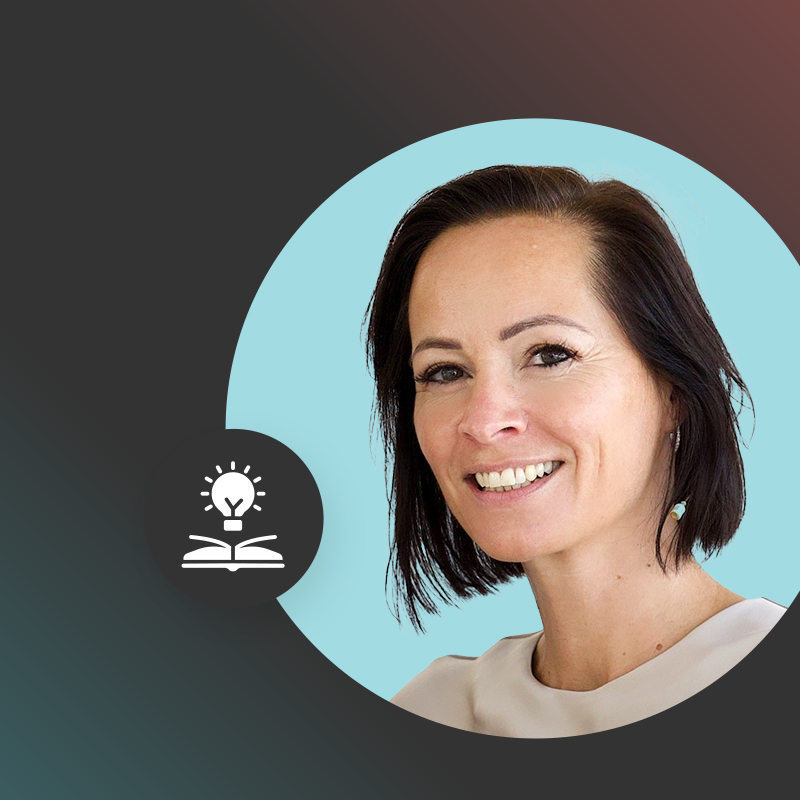Human capital management platforms like Workday, SuccessFactors, and Oracle provide a robust solution for HR professionals to run their operations — such as managing talent, benefits, recruiting, time and absence, and payroll — efficiently. But when it comes to inspiring, engaging, and cultivating employee performance, these multifunction systems don’t cut it. In our 2024 State of Performance Enablement study, we found that HCMs are 70% more effective for performance management when they are integrated with a purpose-built performance management solution like Betterworks. Across every measure of performance, there is a 30-40% improvement in outcomes.
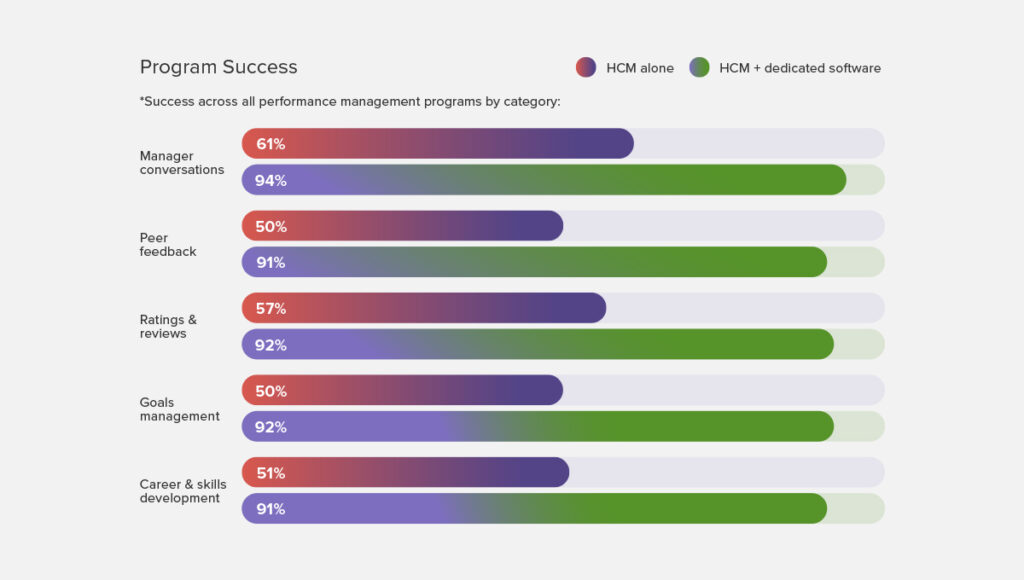
In many cases, the same research showed that HCMs often perform little to no better than manual solutions, such as using spreadsheets, for performance management — and in a couple of cases, HCM’s performed worse. Technology matters greatly.
Our 2023 Annual State of Performance Enablement study found that most employees are dissatisfied with the performance management capabilities embedded in these multifunction platforms.
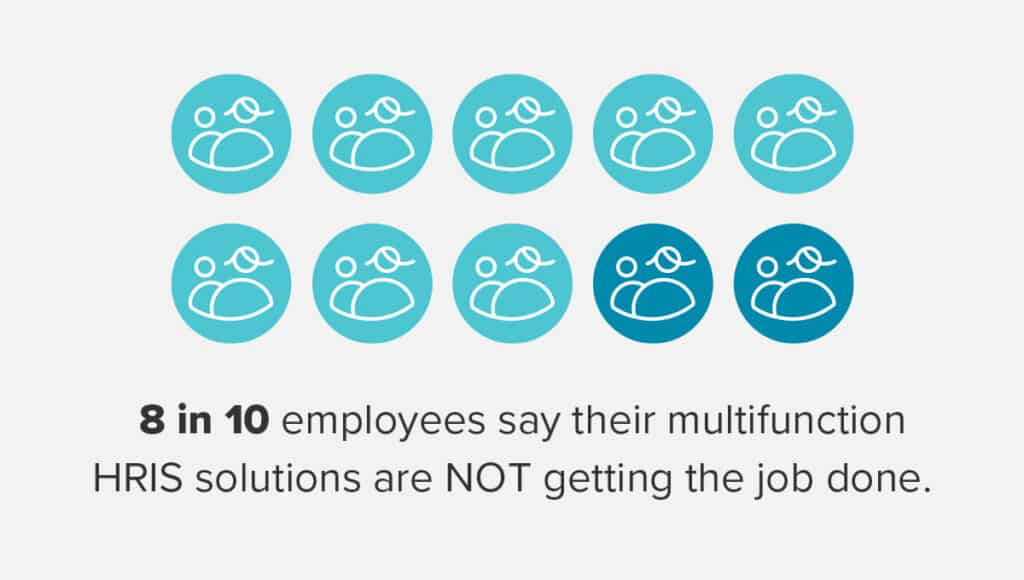
To serve their intended purpose, performance management systems need to do the following.
Provide employee-centric experiences
As HR systems of record, HCM applications are built with the core focus of centralizing HR information, consolidating functions, automating tasks, and providing people insights. User experience takes a backseat. It’s no surprise that the performance management tools within these systems are often maligned by employees, managers, and HR alike.
By contrast, Betterworks distinguishes itself by shifting performance management from being compliance-driven to being people-centered, making the experience of work more rewarding.
Looking at product usage, an average employee engages with the performance management module maybe a couple of times a year compared to at least once a week with Betterworks.
Betterworks also helps build better managers. It provides managers with the tools to:
- Engage more deeply with employees with context-driven conversations and developmental interactions guided by best-in-class templates
- Develop their team members’ talents and show a genuine investment in moving their careers forward by tying performance to upskilling opportunities
- Demonstrate fairness by making timely and fair data-driven talent decisions with team insights
- Listen to their team and resolve issues by creating action plans with just a click.
The various modules in Betterworks’ performance enablement solution are highly interconnected. When an employee is having a conversation with their manager — their goals, training course progress, and the feedback and recognition they’ve received — are all front-and-center so they can have focused, productive, and timely discussions. These practices reinforce one another and, together, create the habits, relationships, and collaboration that drive great performance.
Be daily systems
When your software for goals, conversations, feedback, and recognition is kept totally separate, locked away in an HCM system that typically only gets accessed once or twice a year, not only are these practices not top of mind — you are, in essence, asking employees to develop their own systems for keeping track of their work, development plans, the feedback they’d like to give or request, and the people they’d like to thank and recognize. Of course, most people in the course of their regular busy work day aren’t going to do that. So performance processes are neglected, and annual conversations continue to be ineffective vehicles for assessing an entire year’s worth of contributions.
Betterworks takes performance management from a laborious and painful point-in-time activity to something employees can leverage effortlessly in their own flow of work. With cutting-edge integrations and AI, we bring conversations, feedback, and goal tracking into the applications that employees and managers are already using, every day. Microsoft Outlook, Teams, Gmail, Slack, and other tools become a place to quickly view and update goals, schedule conversations, give or receive feedback, and offer recognition.
Give HR the flexibility to adapt to a new way of working
Most work today happens in teams that are dynamic, agile, and cross-functional. Yet, in HCMs, performance management apps are deployed against the traditional vertical org chart, making them too rigid. They are also hinged on the traditional methods of performance management — such as annual reviews, annual goal setting, and infrequent check-ins — which are no longer successful.
By contrast, Betterworks is built as a flexible system that allows for customization and shifts in priorities. For example, Betterworks:
- Enables dynamic goal-setting — rather than fixed in a once-a-year exercise — and measures and tracks real-time execution insights around those goals
- Ensures an effortless process for managers to initiate conversations with their employees — setting priorities or need-based development plans jointly in a changing environment
- Provides the ability to set cross-functional, team-based goals
Enabling these kinds of flexible capabilities in an HCM system can be a heavy lift — requiring non-trivial implementations and customizations.
Organizations must put employee experience first when designing effective performance enablement. Use your HCM where it is strongest — as a system of record — and move mission-critical performance management to a dedicated, consumer-grade, best-in-class solution like Betterworks — that can better drive adoption and meet employees and managers in their flow of work.
Visit our integrations page to learn more.
Make Modern Performance Enablement a Reality
